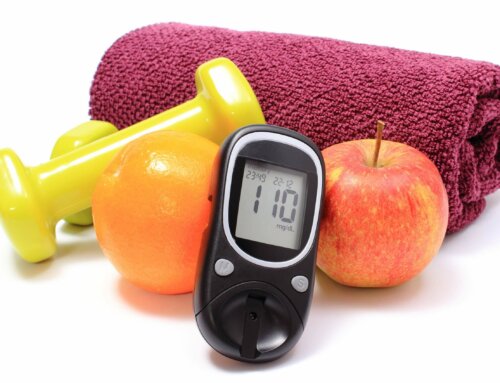
Mattocks, diagnosed with Type 2 Diabetes in 2010, has been on a mission to spread the word about how easy it can be to make healthier food choices. He emphasizes that small changes in diet can be made quickly and that the positive impact it has on your life can speak volumes.
Here is our conversation:
- When you meet someone for the first time and they inform you that they have diabetes, what is the most common question about cooking/eating that you encounter?
Great question. One of the most common questions I hear is, "Does this mean I have to give up every food I love?’ Another one is, ‘How can I make healthy food taste good?’ I even hear these questions even from doctors. So many people think that people with diabetes have to eat bland, tasteless meals. I assure them that healthy foods can taste even better than what they may be used to eating. They will get to experience the natural flavors that are all too often masked by an excess of salt and sugar. I encourage them to experiment with herbs and spices to accent their healthy meals. I remind them that we eat first with our eyes. The vibrant colors of fresh produce will be visually appealing, tasty, and beneficial to their health. I dress my salads with just a splash of olive oil and lemon juice and it is delicious!
- With the summer in full swing, what is your favorite diabetes-friendly dish to bring to a get together?
I love to visit farmers markets and find an assortment of fresh and colorful vegetables and herbs for my salads. Cilantro is rich in minerals, Vitamin K, and anti-oxidants. Parsley is not just a garnish to leave on the side of your plate. It contains enzymes that help to metabolize carbohydrates. Parsley also has properties that may help prevent eye disease. These are just two of the herbs I like to use to boost the taste and nutrition of my salads. Sometimes I will sprinkle some low-fat feta crumbles on top for a little extra zing. Just before serving I spray on a mixture of olive oil and balsamic vinegar or lemon juice. Spray on? Yes! Put the dressing ingredients in a spray bottle, shake it up, and spray. This helps to ensure that the dressing is dispersed lightly and evenly. This is also more cost effective as you will not have un-used pools of dressing on the bottom of your salad plate when done eating.
- How about a dessert?
I really enjoy a fruit salad made with low carb/low glycemic index fruits. My all time summer favorite takes a little bit of effort but it is really delicious. I take peaches, cut them in half, remove the pit, and place the fruit cut side down on the grill. After about five minutes, place them on a platter and top them with an assortment of berries and a sprig of fresh mint. Guests may opt for a dollop of fat free whipped topping or plain yogurt. Nice, light, tasty and nutritious. You don’t want to end a summer meal with a heavy dessert.
- Can you name three of your favorite diabetes-friendly spices or garnishes that you use often that can completely change a meal?
Coming from a Jamaican background I love the flavors of the Islands. Allspice is grown on the island and tastes like a mixture of cinnamon, cloves, and nutmeg. It is added to "Jerk Seasoning" one of my favorites. Jerk is not just a blend of spices it actually refers to the method of cooking as well. I use a lot of onions in my cooking. They add a nice crunch when used raw and a natural sweetness when cooked. Raw onions affect the taste buds in such a way as to make them more sensitive to the flavor of the food. I enjoy the fresh taste that cilantro adds to a dish. I could go on and on about spices and herbs. It is so hard to limit myself to three! I encourage people to purchase small amounts of new spices and experiment with them. Many natural food stores sell spices by weight so you don’t have to worry about buying a whole jar and discovering it is not what you like.
- With so much attention being paid to the issue of obesity in our country, it is even more important to know what we are consuming with every meal. How easy is that to accomplish?
Keep it simple but creative. Those are my key words to anyone I talk to. I know i t sounds like the same song over and over, but let it be the theme song of your healthy new life. It will take some time and commitment to educate yourself about nutrition. Be sure to read information from a variety of sources. We became an obese nation by choosing quick over quality. We have been more concerned about the type of gas and oil we put into our cars than about the fuel we put into our bodies. Change one thing at a time. This week, start drinking more water. Avoid beverages that are low in nutrition and high in calories. Read the nutrition labels, avoid overly processed foods, care enough about yourself to invest time into getting you healthier! You are worth it.
- Reading nutrition labels is extremely important, but it can be very confusing as well. As a chef with diabetes, what are the main things that you look at when reviewing a product’s nutrition label?
Check for the sodium level. All too often, foods that are labeled "low fat" or "reduced calorie" have lots of added salt to replace the fat or sugar that has been removed. High blood pressure often accompanies diabetes and it can be a killer. Watch out for sneaky hidden sugars too. It may come as a surprise to see them in places you would not expect to find them. If an ingredient ends in "ose" it is a form of sugar. Beware! It is also very important to note serving size. Our idea of a serving size and the actual serving size can be vastly different.
Everything on the nutrition label should be studied. I am working on "The Poor Chef’s Guide to What’s Inside" a pocket size chart you can take to the grocery store with you to help when you are reading labels.
- These days it is more ‘en vogue’ to shop at stores that offer organic products. It is usually more expensive as well. Can cooking with more natural ingredients be done affordably?
It can be done affordably. Community Supported Agriculture (CSA) provides a win/win situation for consumers and farmers. Go to http://www.localharvest.org to find CSAs in your area. When you become part of a CSA you purchase a share of the crops for the year. Some CSAs offer the opportunity for shareholders to help on the farm. Each week you will receive a box of the fruits and vegetables that are ripe. This is a wonderful way to support a local farmer, get just picked produce, and try new foods. On the Local Harvests website you can search for locations near you. "Buy fresh. Buy local" is more than just a catchy phrase. It is a way to good health. Become acquainted with the "health stores" or "natural food stores" in your area. Many of them offer classes or cooking demonstrations that will are be very interesting and informative.
- If you had to suggest four common cooking items that a family could affordably convert to organic, what would they be?
Actually, I will give you 10 items. There are ten types of produce that tests have shown containing the highest amount of pesticide: apples, celery, bell peppers, peaches, strawberries, spinach, grapes, lettuce, cucumber, and nectarines. These are some of the items you should try to buy organic whenever possible.
- If you could suggest just one tip that would benefit anyone that is concerned about their eating habits, what would it be?
When it comes to healthy eating it is never too late to start but too important to put off another day. Carpe diem! Seize the day. Start making changes one day at a time.
I have so many tips I would like to share. If I have to narrow it down to just one I would say: drink more water. Try a slice of lemon or lime or even cucumber for a refreshing taste.






Leave A Comment